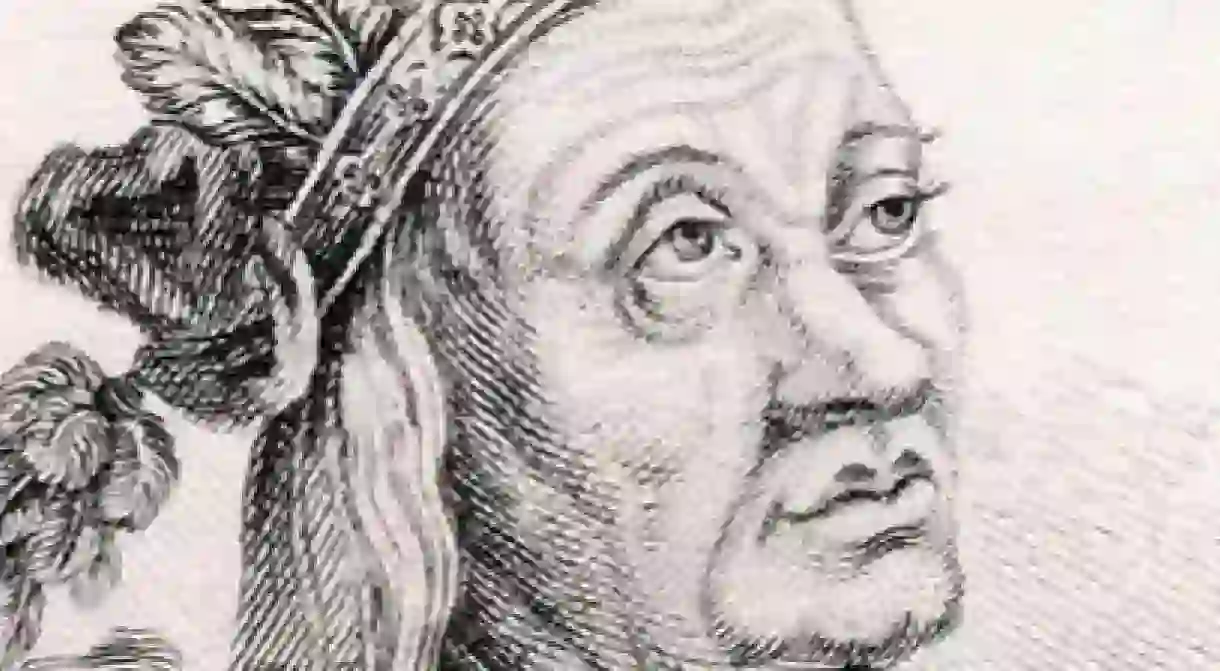The Mystery Of Atahualpa’s Tomb

The location of the last Inca Emperor’s tomb has been a mystery for centuries, but now, an Ecuadorian historian thinks she might have finally found it, and that the tomb may shine some light on the last days of the Inca Empire.

After ten years of investigation, Tamara Estupiñán, a researcher with the French Institute for Andean Studies, thinks she has finally found the remains of the last Inca emperor, Atahualpa. The Inca Empire covered more than 1,000 miles of South America in the 1400s and early 1500s, and spanned parts of present-day Bolivia, Peru, Argentina, Chile, Ecuador and Colombia. Estupiñán believes that the tomb must be in Malqui Machay, in the Andes about 40 miles south of Quito, near the active volcano Cotopaxi, a territory currently used to farm fighting cocks. The Malqui Machay archaeological site was discovered during two expeditions: the first took place in 2004, where they discovered Malqui, and the second in 2010, when they discovered Machay. Those discoveries are the result of an exhaustive historical investigation that started when Estupiñán found the will of Atahualpa’s son, Francisco Atabalipa el Auqui, written in 1582 and published in 1988, in which he describes his properties, which led her to those territories.
Her theory is based on the facts that the name of the territory Machay means, in the Quechua language, “secret cave” and “resting place of the Malqui.” There are many Machay ruins in the Malqui region. Malqui translates as “body” or “mummy of Inca ancestors.” So Malqui Machay must mean ‘the side where his body is buried’. Those archeological discoveries in the area, plus Estupiñán’s theory, have convinced the Ecuador National Institute of Cultural Heritage to finance the excavation work, due to begin next year. Estupiñán will be front and centre to raise the curtain on a massive complex sprawling over a ridge at 1,020 meters. Inside the Machay rural retreat, her team discovered a complex of walls, aqueducts and stonework. This was described by the researchers as “a late imperial Inca monument that leads to several rectangular rooms that were built with cut polished stone set around a trapezoidal plaza.”
The Inca Emperor Atahualpa was born in 1500. Son of the Emperor Huayna Capac, he fought with his older half-brother Huáscar for control of the Tahuantinsuyu Empire. In 1532 the Spanish conquerors arrived at Cajamarca and his leader, Francisco Pizarro, asked for a meeting with the Emperor. Atahualpa agreed to this meeting which was in fact an ambush to trap the Inca. First friar Vicente de Valverde, offered the Bible to Atahualpa and ordered him to accept the Christian faith and to submit to the authority of the Spanish Crown, and when he refused, Pizarro gave the order to attack and the Spaniards came out of their hiding places and charged the unsuspecting Inca retinue, started the massacre with firearms to the confused and almost unarmed Incas. Not a single Spanish soldier was killed, and the Spanish soldiers captured the Emperor and made him their prisoner. To regain his freedom, the emperor promised to the conquerors he would fill his prison cell with gold and silver but despite accomplishing that Pizarro decided to kill him anyway. He staged a mock trial and found Atahualpa guilty of revolting against the Spanish, practising idolatry, and murdering Huáscar, his half-brother. He was supposed to be burned alive, but he agreed to convert to Catholicism to commute the sentence and be executed by strangulation with a garrote. His death in 1533 provoked the fall of the Inca Empire.
Estupiñán believes that when Atahualpa was killed his remains could have been brought by his most loyal man, Ruminahui, to Sigchos for burial, to a place where Ruminahui based his fight for survival against the European intruders. If the tomb were finally found, it could be a vitally important find for the history of Ecuador’s archaeology and for the Andean region.
Image courtesy: Brooklyn Museum/WikiCommons.













